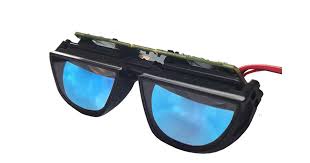As augmented reality (AR) technology advances, users expect seamless image blending and lifelike visuals. Yet, one recurring issue that continues to challenge engineers is poor optical alignment and image distortion in head-mounted displays. The missing link often lies in the Bird Bath optical module — a critical component that defines how light paths converge and how virtual objects appear within the user’s field of view.
When inferior optical modules are used, AR devices suffer from reduced brightness, color inconsistency, and viewing fatigue. In this article, we’ll explore why Bird Bath optical modules are essential for modern AR systems, how poor optics affect visual performance, and what specifications ensure superior results.
Understanding the Function of a Bird Bath Optical Module
A Bird Bath optical module is a hybrid reflective-refractive optical system used to project images onto semi-transparent lenses in AR headsets. It typically consists of a beam splitter, curved mirror, and lens system that together direct and magnify virtual images for the user.
Its purpose is to:
- Merge virtual content with real-world visuals.
- Maintain uniform brightness and color across viewing angles.
- Enable compact optical designs without bulky lens setups.
Without proper alignment and coating, the entire system loses optical efficiency, resulting in unclear or washed-out visuals.
Common Problems Caused by Low-Quality Bird Bath Modules
Poorly engineered Bird Bath optical modules can severely degrade AR performance. Here are some typical issues faced in production:
- Low Image Brightness:
Subpar coatings and reflective surfaces reduce light throughput, making the projected image dim under bright conditions. - Chromatic Aberration:
Improper refractive index control causes color separation, affecting visual realism and accuracy. - Ghosting and Double Imaging:
Misaligned beam paths or low-grade reflectors lead to light overlap, producing ghost-like reflections. - Limited Field of View (FOV):
Low-precision optical geometry restricts viewing angles, reducing immersion in AR experiences.
These optical challenges directly impact user comfort, system calibration, and long-term adoption of AR devices.
Why Optical Design and Coating Quality Matter
High-performance Bird Bath modules are crafted using premium optical glass and advanced thin-film coatings. These coatings reduce reflection losses and improve transmittance, ensuring vivid and distortion-free visuals.
Modern AR systems demand:
- Anti-Reflective (AR) coatings to reduce glare.
- High-reflectivity dielectric mirrors for bright image projection.
- Tight optical tolerances for consistent beam alignment.
When these parameters are compromised, even the best display panels cannot achieve optimal performance. A well-designed Bird Bath optical module ensures a perfect balance between light reflection and transmission — the core of high-quality AR visuals.
Applications Across the AR and Optical Industry
Bird Bath optical modules are primarily found in AR head-mounted displays, but their design principles extend across multiple optical sectors:
- Consumer AR glasses: Enhancing transparency and visual contrast.
- Industrial AR systems: For precise digital overlays in manufacturing or repair tasks.
- Defense and aerospace optics: For head-up and tactical displays.
- Medical visualization systems: Providing depth-corrected augmented imaging.
Their combination of compact design, efficiency, and precision makes them indispensable for the future of wearable optical technology.
How Bird Bath Modules Compare to Other AR Optical Systems
Unlike waveguide-based optics, which rely on complex light routing through transparent materials, Bird Bath modules offer simpler, high-contrast projection with greater brightness. While waveguides are excellent for slim designs, Bird Bath setups outperform them in image sharpness, contrast, and affordability — especially for prototype and mid-range AR devices.
However, the trade-off lies in bulkier form factors and potential reflection management challenges. Advanced optical coatings and lightweight materials are helping mitigate these limitations in newer designs.
Conclusion
No matter how advanced the display engine or image processor, AR clarity starts at the optical module. A poor-quality Bird Bath setup can distort visuals, reduce contrast, and lead to inconsistent user experiences.
By choosing precision-engineered Bird Bath optical modules, manufacturers can achieve true-to-life AR visuals with better brightness, accurate color rendering, and wide viewing angles. The future of AR depends not just on digital innovation but also on the mastery of optical precision — and the Bird Bath module stands at the heart of that evolution.


